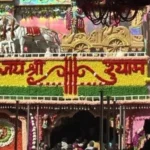Kumbhalgarh, a historic fort located in the Aravalli Hills of Rajasthan, is one of the architectural and cultural marvels of India. Famous for its immense walls that stretch over 36 kilometers (second only to the Great Wall of China), this UNESCO World Heritage site is an exceptional example of Rajputana grandeur and resilience. Built by Rana Kumbha in the 15th century, Kumbhalgarh Fort is not only an architectural wonder but also a place of deep historical significance, as it was the birthplace of Maharana Pratap, the legendary Rajput warrior.
Choosing the best time to visit Kumbhalgarh allows you to explore the fort’s sprawling grounds, ancient temples, scenic viewpoints, and surrounding landscapes comfortably. Here’s a guide on the ideal seasons to visit Kumbhalgarh, helping you experience this historic fort at its best.

The Enchantment of Kumbhalgarh Fort
Kumbhalgarh Fort is a symbol of Rajput valor and architectural brilliance. The fort’s massive walls, towering gates, and strategic hilltop location make it a remarkable site, surrounded by lush forests, valleys, and hills. Inside the fort complex, visitors can explore over 300 ancient Jain and Hindu temples, palaces, and scenic spots offering panoramic views of the Aravalli range. The Badal Mahal (Palace of Clouds), located at the top of the fort, provides stunning vistas of the surrounding landscape, especially during sunrise and sunset.
Beyond the fort, Kumbhalgarh Wildlife Sanctuary offers an opportunity to experience Rajasthan’s natural beauty and wildlife. The sanctuary is home to leopards, hyenas, wolves, and various bird species, adding an exciting dimension to a visit to Kumbhalgarh. Let’s explore the best times to visit this remarkable fort and what each season has to offer.
Best Seasons to Visit Kumbhalgarh
1. Winter (October to February)
Winter is widely regarded as the best time to visit Kumbhalgarh, as the weather is cool and pleasant, with temperatures ranging between 10°C and 25°C. This season offers an ideal climate for exploring the fort’s vast grounds, climbing its many stairways, and taking in the beautiful surroundings without the discomfort of heat.
During winter, Kumbhalgarh is particularly enchanting in the mornings and evenings when the fort’s stone walls and ancient structures are bathed in soft, golden light. Winter is also the best season for trekking in the nearby Kumbhalgarh Wildlife Sanctuary, as the cool weather makes it comfortable to explore the forested trails and spot wildlife.
The winter season also coincides with the Kumbhalgarh Festival, a three-day cultural event held in December that celebrates Rajasthan’s traditional music, dance, and crafts. During the festival, the fort comes alive with colorful performances, folk music, puppet shows, and art exhibitions, offering visitors a chance to experience the rich cultural heritage of Rajasthan. The fort is illuminated with beautiful lights at night, creating a magical atmosphere that adds to the appeal of visiting in winter.
If you plan to visit in winter, it’s best to book accommodations in advance, as this is the peak tourist season in Rajasthan, especially around the time of the Kumbhalgarh Festival.
2. Monsoon (July to September)
Monsoon in Kumbhalgarh brings moderate to heavy rainfall, transforming the landscape into a lush green paradise. Temperatures during the monsoon season range from 20°C to 30°C, and the rain brings a refreshing change to the arid surroundings. The fort’s stone walls, hills, and forested areas are beautifully green, making this season ideal for nature lovers and photographers.
The rain-washed fort and the surrounding greenery create a mystical atmosphere, with mist sometimes enveloping the fort’s high walls and towers, giving it a surreal feel. Monsoon also brings fewer tourists, allowing for a peaceful exploration of the fort and surrounding areas. While trekking trails may become slippery, visitors can still enjoy walking around the fort and capturing scenic views of the rain-kissed Aravalli range.
For those who enjoy solitude and natural beauty, monsoon provides a unique and quieter experience of Kumbhalgarh. However, it’s essential to carry rain gear, wear sturdy footwear, and check the weather forecast before visiting, as heavy rains can occasionally affect accessibility.
3. Summer (March to June)
Summer in Kumbhalgarh can be warm, with temperatures ranging from 25°C to 40°C, especially in May and June. While this is not the most popular season, visiting in early summer (March and April) is still feasible, especially if you plan your explorations for early mornings or late afternoons when temperatures are relatively cooler.
For travelers who prefer fewer crowds, summer offers a quieter experience, with fewer tourists exploring the fort and nearby areas. Early morning visits provide cooler temperatures and excellent lighting for photography, allowing you to capture the fort’s grandeur without the crowds.
During summer, Kumbhalgarh Wildlife Sanctuary offers opportunities for wildlife sightings, as animals often come out in search of water. The clear skies make it an ideal time for stargazing at night, adding an exciting dimension to your trip.
If you plan to visit during summer, carry plenty of water, sun protection, and light clothing to stay comfortable. Summer offers the added advantage of lower accommodation rates, making it a more budget-friendly season for visiting Kumbhalgarh.
Key Attractions and Activities in Kumbhalgarh
- Kumbhalgarh Fort Walls and Gates: Known as the second-longest wall in the world, the fort’s 36-kilometer wall is a must-see. Walking along the walls provides stunning views of the surrounding landscape, giving a sense of the fort’s immense size and strategic importance.
- Badal Mahal (Palace of Clouds): Located at the highest point in the fort, Badal Mahal offers panoramic views of the Aravalli hills and valleys. This palace is a popular spot for sunrise and sunset views, and its intricate architecture is worth exploring.
- Kumbhalgarh Wildlife Sanctuary: For nature and wildlife lovers, the nearby sanctuary offers trekking trails and safaris, providing a chance to spot animals such as leopards, wolves, and antelopes. The sanctuary is best explored in winter and early summer.
- Kumbhalgarh Light and Sound Show: The fort hosts an evening light and sound show that narrates the history of Kumbhalgarh and its role in Rajasthan’s defense. The show adds a dramatic flair to the fort’s history and is a must-see for history enthusiasts.
- Temples within the Fort Complex: Kumbhalgarh Fort houses over 300 Jain and Hindu temples, each with unique architectural styles. The Neelkanth Mahadev Temple, dedicated to Lord Shiva, is a major attraction within the fort and features beautiful stone carvings.
- Trekking and Nature Walks: The hills surrounding Kumbhalgarh are ideal for trekking, with trails leading through forests, valleys, and scenic viewpoints. Winter and monsoon seasons offer the best conditions for these outdoor activities.
Practical Tips for Visiting Kumbhalgarh
- Entry Timings: Kumbhalgarh Fort is open daily from 9:00 AM to 6:00 PM. Arriving early in the morning or late in the afternoon allows you to avoid the midday heat, especially in summer.
- Accommodation Options: Kumbhalgarh has several hotels, resorts, and guesthouses catering to different budgets. During the peak season and Kumbhalgarh Festival, it’s advisable to book accommodations in advance.
- Dress Comfortably: Wear comfortable shoes and clothing suited to the season. Light, breathable attire is best for summer, while warm clothing is recommended for winter mornings and evenings. For monsoon, carry a raincoat or umbrella.
- Photography: Kumbhalgarh’s walls, temples, and views are perfect for photography, especially during golden hours. The monsoon season adds a lush green background, while winter’s clear skies enhance the beauty of the fort.
- Respect Local Customs: Kumbhalgarh is a heritage site with religious significance. Visitors are encouraged to respect the temples, avoid littering, and follow all rules and guidelines to preserve the site.
Conclusion
Kumbhalgarh is an extraordinary destination that offers visitors a journey through Rajasthan’s rich history and architectural grandeur. From the cool and festive winter season to the green monsoon landscapes and quiet summer mornings, each season brings a unique charm to this magnificent fort. Whether you’re drawn to the fascinating architecture, scenic beauty, or wildlife sanctuary, planning your visit according to your preferred season will make your journey to Kumbhalgarh truly memorable. Step into the majestic world of Rajputana, where history and nature blend seamlessly, creating an experience you won’t forget.


